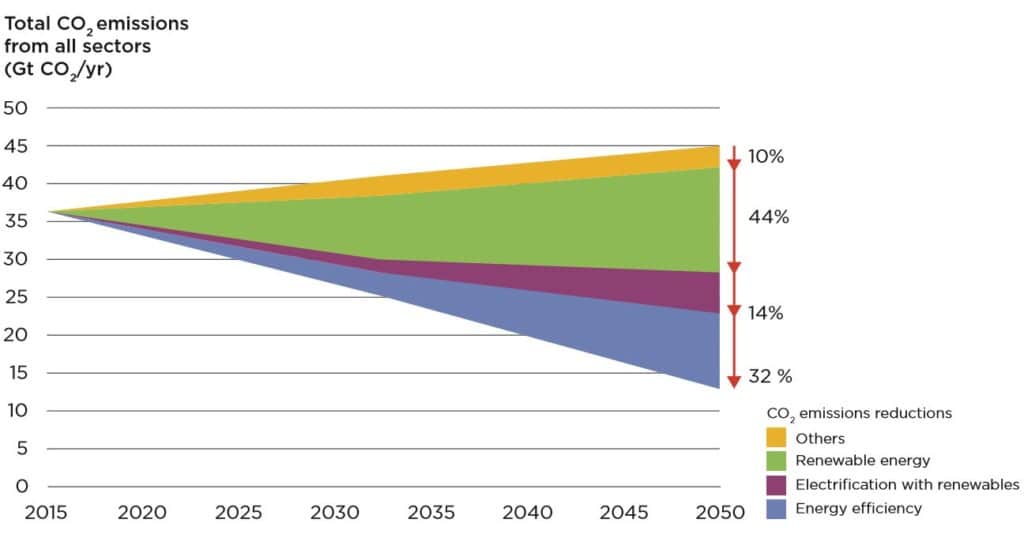By expanding renewable energy and improving energy efficiency, energy-related carbon-dioxide (CO2) emissions globally could be reduced by 70% by 2050 and completely phased out by 2060, according to new findings from the International Renewable Energy Agency (IRENA).
IRENA’s “Perspectives for the Energy Transition: Investment Needs for a Low-Carbon Energy Transition” presents the case that increased deployment of renewable energy and energy efficiency in G20 countries and around the world can achieve emissions reductions needed to keep the global temperature rise to no more than 2 degrees C, as laid out in the Paris Agreement.
“The Paris Agreement reflected an unprecedented international determination to act on climate,” explains Adnan Z. Amin, director-general of IRENA. “The focus must be on the decarbonizion of the global energy system, as it accounts for almost two-thirds of greenhouse-gas emissions.
“Critically, the economic case for the energy transition has never been stronger,” Amin continues. “Today, around the world, new renewable power plants are being built that will generate electricity for less cost than fossil-fuel power plants. And through 2050, the decarbonization can fuel sustainable economic growth and create more new jobs in renewables.”
Great study – we agree! In 2017, we’ll invest DKK 18-20 billion in #energy – primarily offshore wind. #climateaction https://t.co/8TsPWinmuL
— DONG Energy (@DONGEnergy) March 21, 2017
Overall, though the investment needed for decarbonizing the energy sector is substantial – an additional $29 trillion until 2050 – it amounts to a small share (0.4%) of global GDP, the agency points out.
Furthermore, IRENA’s macroeconomic analysis suggests that such an investment would create a stimulus that, together with other pro-growth policies, could accomplish as follows:
- Boost global GDP by 0.8% in 2050;
- Generate new jobs in the renewable energy sector (and in energy efficiency) that would more than offset job losses in the fossil-fuel industry; and
- Improve human welfare through additional environmental and health benefits, thanks to reduced air pollution.
Globally, 32 gigatons of energy-related CO2 were emitted in 2015. The report states that emissions will need to fall continuously to 9.5 gigatons by 2050 to limit warming to no more than 2 degrees above pre-industrial temperatures. Further, 90% of this emissions reduction can be achieved through expanding renewable energy deployment and improving energy efficiency, says IRENA.
According to the agency, renewable energy now accounts for 24% of global power generation and 16% of primary energy supply, but to achieve decarbonization, the report says, by 2050, renewables should be 80% of power generation and 65% of total primary energy supply.
The report also describes how the energy sector transition needs to go beyond the power sector into all end-use sectors: Renewables need to account for the majority of power generation in 2050 – based on continued rapid growth, especially for solar and wind power – in combination with enabling grids and new operating practices.
“We are in a good position to transform the global energy system,” Amin warns, “but success will depend on urgent action, as delays will raise the costs of decarbonization.”
Greg Muttitt, senior advisor at Oil Change International, adds in a statement, “The clear conclusion is that governments must act now to begin a managed decline of the fossil-fuel industry – a process that is both achievable and affordable with clean energy.”
The full report can be downloaded here.





